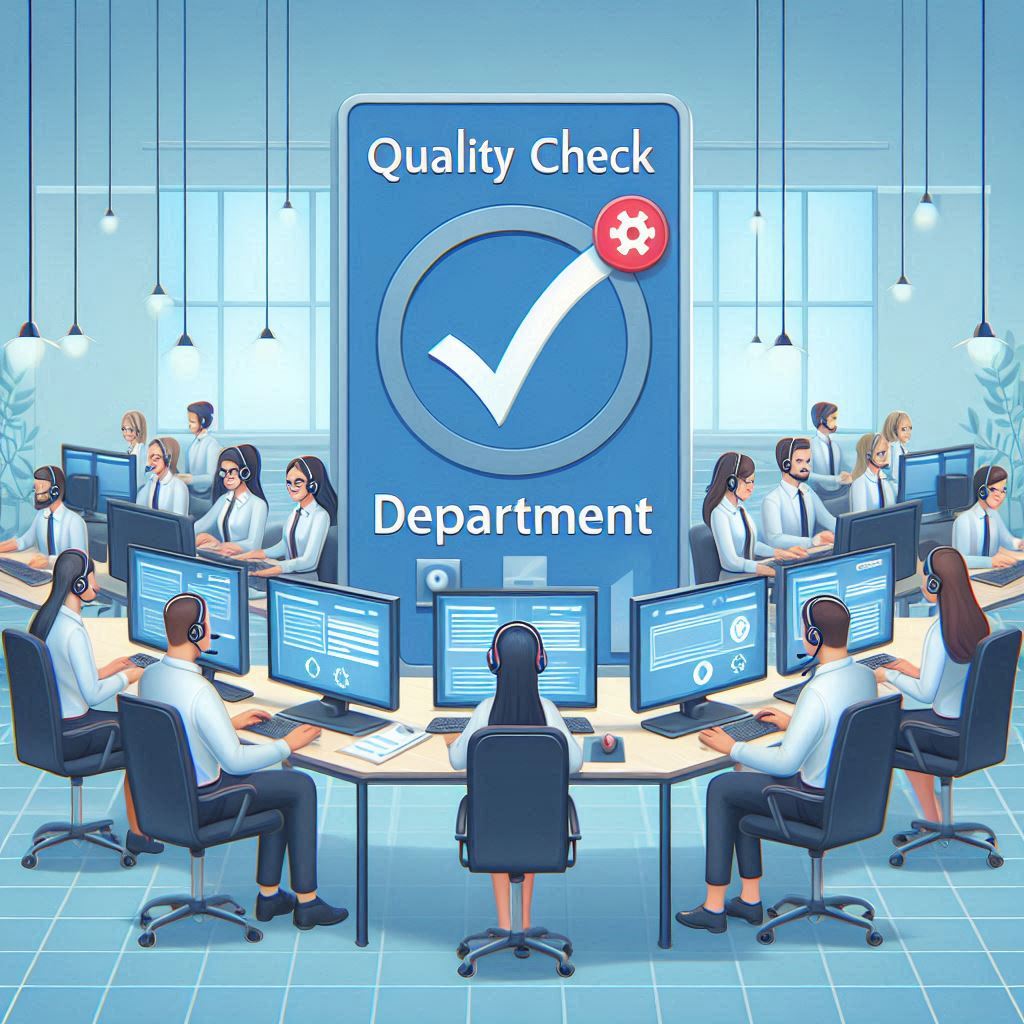Customer experience is a crucial factor that sets companies apart in today’s fast-paced business landscape. Efficient call centers play a crucial role in maintaining high customer satisfaction levels in today’s fast-paced business landscape, which we cannot overstate. Manual QA processes in call centers and BPOs pose challenges that impact performance, efficiency, and customer satisfaction. Let’s delve into the key difficulties and irritations encountered in manual QA procedures.

Limited feedback:
QA teams are trying to assess calls based on a predetermined set of criteria or a scoring matrix they receive. This is great for standardization, but it may miss the important aspects of evaluating the expected customer satisfaction, and therefore lose its direct significance in customer retention.
Time-Consuming:
The process of manually reviewing calls is extremely time-consuming. QA teams have to listen to each call in real-time or near real-time, which can take hours or days, especially when dealing with a large volume of interactions. This leads to delays in feedback, slow decision-making, and an inability to address issues promptly. Automated systems can analyze thousands of calls simultaneously, significantly reducing the time required for quality assurance. Real-time insights and instant reporting help in quickly identifying issues and trends.
Limited Coverage:
Due to time limitations, QA teams usually only evaluate a small fraction (1-3%) of all calls, leaving the majority of interactions unreviewed. This sampling approach can miss critical customer interactions, patterns, or agent performance issues, leading to an incomplete picture of the overall service quality. Auto QA systems analyze every customer interaction, ensuring 100% of call coverage. This ensures a comprehensive review of all calls, providing an accurate representation of performance across the board.
Subjective Scoring and Inconsistency
Bias or inconsistency may arise in scoring calls due to human evaluators. Each reviewer may have different interpretations of what qualifies as a “good” or “bad” call, leading to subjective evaluations. Inconsistent scoring can cause unfair assessments, affecting agent morale and skewing performance metrics. Automated QA ensures standardized and objective scoring. By evaluating every call against the same criteria, evaluators reduce human error and bias, providing agents with fair and consistent feedback.
High Operational Costs
It’s costly to maintain a large manual QA team. As call volumes increase, so does the need for more QA personnel, leading to escalating operational costs. Higher costs reduce profitability, especially for businesses that rely on high call volumes, such as BPOs. Automation reduces the need for extensive QA personnel, cutting down on labor costs while simultaneously increasing the scope of QA coverage. The solution scales easily with call volume without proportional cost increases.
Delayed Feedback to Agents
Feedback to agents can be delayed due to manual QA processes. Delayed feedback means agents cannot correct their mistakes or improve their performance in real-time, leading to recurring issues and missed growth opportunities. Auto QA provides near-instant feedback to agents, enabling them to correct their performance quickly. Real-time dashboards and coaching feedback allow for continuous improvement, which enhances service quality.
Difficulty in Monitoring Compliance
Ensuring adherence to scripts, regulations, or business processes can be challenging with manual QA that only covers a small portion of calls. Failure to ensure compliance can lead to regulatory penalties, missed sales opportunities, and damage to brand reputation. Auto QA can automatically detect script compliance and flag calls where deviations occur. This ensures that the system flags the call where deviations occur, monitoring every interaction for regulatory and procedural adherence and reducing the risk of non-compliance.
Inability to Identify Trends and Patterns
It’s difficult to analyze larger patterns like customer sentiment, recurring issues, or training needs across multiple agents with limited data from a manual QA process. Missing these trends means call centers cannot proactively address underlying problems, leading to lower customer satisfaction and missed business insights.
Auto QA systems analyze massive amounts of data, identifying trends in real time. By analyzing customer sentiment, examining word patterns, and tracking keyword trends, we can uncover the root causes of customer dissatisfaction and make proactive improvements.
Challenges in Scaling
Scaling manual QA processes becomes more challenging and expensive as call volumes rise. Call centers struggle to maintain high-quality interactions when they cannot keep up with QA demands, leading to customer dissatisfaction and declining service standards. Auto QA solutions are highly scalable. They can handle increased call volumes without requiring additional staff, ensuring that QA processes remain efficient and effective even as the business grows.
How Auto QA Solutions Overcome These Challenges
Supervisors can swiftly identify issues, offer feedback, and make quicker decisions thanks to the real-time insights provided by auto QA solutions. This instant feedback loop improves agent performance and customer satisfaction. By automating the quality assurance process, call centers can reduce labor costs, scale their QA efforts with ease, and still maintain comprehensive monitoring of all interactions.
Comprehensive Monitoring Auto QA ensures that it thoroughly analyzes every call for compliance, sentiment, and performance, leaving no room for oversight. It eliminates the “random sample” approach of manual QA, providing a full picture of call center operations.
The use of automated systems allows for objective scoring by removing human biases and relying on consistent criteria. This ensures fairness in agent assessments and helps build a culture of accountability and continuous improvement.
Enhanced Agent Performance With instant feedback and automated coaching, agents can quickly adjust their performance based on real-time insights. This not only improves service quality, but also enhances agent satisfaction by providing constructive feedback and guidance.
Increased Customer Satisfaction Improved agent performance, real-time monitoring, and sentiment analysis all contribute to higher levels of customer satisfaction. Automated QA helps ensure customers have a consistent and positive experience across interactions.
Automated quality assurance in problem-solving helps call centers identify common issues, customer behavior patterns, and operational obstacles. This proactive approach allows managers to address problems before they escalate, improving overall service delivery.

The features offered by Auto QA significantly enhance the performance and effectiveness of call centers and BPOs (Business Process Outsourcing) worldwide. Here’s how each feature contributes to improving their operations:
1. Call Transcripts.
Automatically generated transcripts allow managers to review customer interactions quickly and efficiently. This saves time compared to manual listening, enhances call accuracy, and enables better tracking of customer concerns, compliance, and agent performance.
2. Keyword Search
By searching for specific keywords within transcripts, call centers can quickly identify recurring issues, agent performance gaps, or compliance violations. This helps streamline agent training and refine customer service approaches.
3. Call Drivers for Inbound Calls
Understanding why customers are calling is essential for improving service. Manually set call drivers help call centers to categorize interactions, revealing patterns in customer behavior, which can then inform training and operational improvements.
4. Call Dispositions for Outbound Calls
Tracking the outcomes of outbound calls is crucial for monitoring agent success in sales, collections, or marketing campaigns. This feature standardizes reporting and makes it easier to optimize strategies for better results.
5. Script Compliance–Auto QA Scorecard
Ensuring that agents stick to approved scripts is vital for compliance and maintaining quality standards. The automated QA scorecard offers a real-time, accurate assessment of script adherence, reducing manual QA efforts and enhancing service consistency.
6. Performance Target Setting
Setting and tracking performance targets across departments and agents allows managers to align goals with service delivery. This feature ensures agents remain accountable, contributing to increased efficiency and productivity.
7. Sentiment Trend Analysis
Sentiment analysis helps identify whether customer interactions are positive, neutral, or negative. By tracking sentiment trends, call centers can identify pain points early, improve agent training, and focus on areas that directly impact customer satisfaction.
8. Customizable Word Clouds
Visualizing customer and agent conversations through word clouds helps call centers identify frequently discussed topics, agent vocabulary trends, or customer complaints. This data helps in making informed decisions to improve agent responses and overall customer experience.
9. Speaking Rate & Over-talk Detection
Monitoring speaking rates and detecting over-talk between agents and customers helps optimize the flow of conversations, leading to smoother interactions and less frustration. This can increase customer satisfaction and prevent misunderstandings.
10. Custom Charts for Competitor Mentions
Being able to track mentions of competitors during customer interactions helps businesses stay informed of what their customers are comparing. This insight can inform marketing and sales strategies, improving competitiveness.
11. First Call Resolution (FCR)
FCR is one of the most critical metrics in customer service. Measuring the frequency of resolving issues on the first call can be a significant factor in improving efficiency and customer satisfaction in call centers. Auto QA’s tracking of FCR helps reduce repeat calls, saving time and resources.
12. Call Summary
Automated call summaries help agents and managers quickly understand the key takeaways of each interaction without reviewing the entire call, improving workflow efficiency and saving time.
13. Estimated CSAT (Customer Satisfaction Score)
Providing an estimated CSAT for each call offers instant feedback on customer satisfaction levels. Call centers can take proactive steps to maintain high service quality by monitoring CSAT trends across agents and departments.
14. Agent Coaching Feedback
Real-time coaching based on call performance helps managers provide actionable feedback to agents. Continuous coaching improves agent skills, boosting customer service levels and productivity.
15. Automated Call Drivers
Automatically generated call drivers help call centers better understand why customers are reaching out, without manual setup. Trend and volume charting offers insights into evolving customer needs, allowing businesses to respond more proactively.

Benefits of Auto QA Solution Across the Call Centers and BPOs Globally:
Improved Efficiency:
With automated features, agents and managers can work faster, freeing up time for more important tasks and reducing operational costs.
Enhanced Service Quality:
Script compliance and sentiment analysis ensure consistent, high-quality interactions that enhance customer satisfaction.
Actionable Insights:
Data-driven insights from call drivers, custom charts, and sentiment trends help decision-makers refine their strategies based on real-world information.
Cost Reduction:
Automation of quality assurance and call analytics reduces the need for manual processes, helping BPOs and call centers save money while maintaining service quality.
Global Scalability:
Companies can apply these solutions across different industries and geographies, making them versatile tools for call centers and BPOs worldwide.
In summary, these features streamline daily operations and provide the data-driven insights and automation needed to enhance call center performance and customer satisfaction globally. By adopting these advanced tools, call centers and BPOs can stay competitive and deliver exceptional service in an increasingly digital world.
CallAI is not just a tool but a comprehensive solution that empowers call centers to operate more efficiently, improve service quality, and deliver a better overall customer experience. With its advanced features and optional AI capabilities, businesses can improve performance, save money, and stay ahead in today’s competitive market. Ready to elevate your call center operations? Schedule a demo to see how CallAI can meet your needs!

